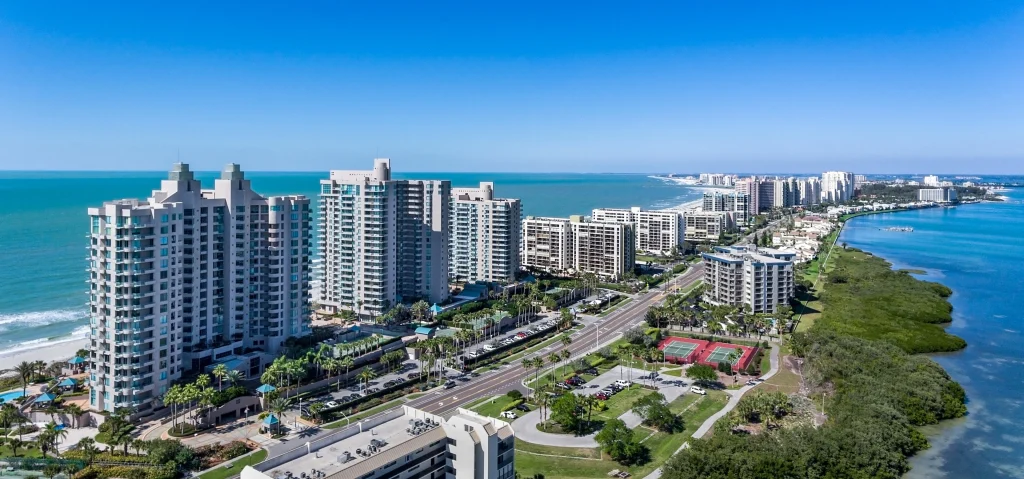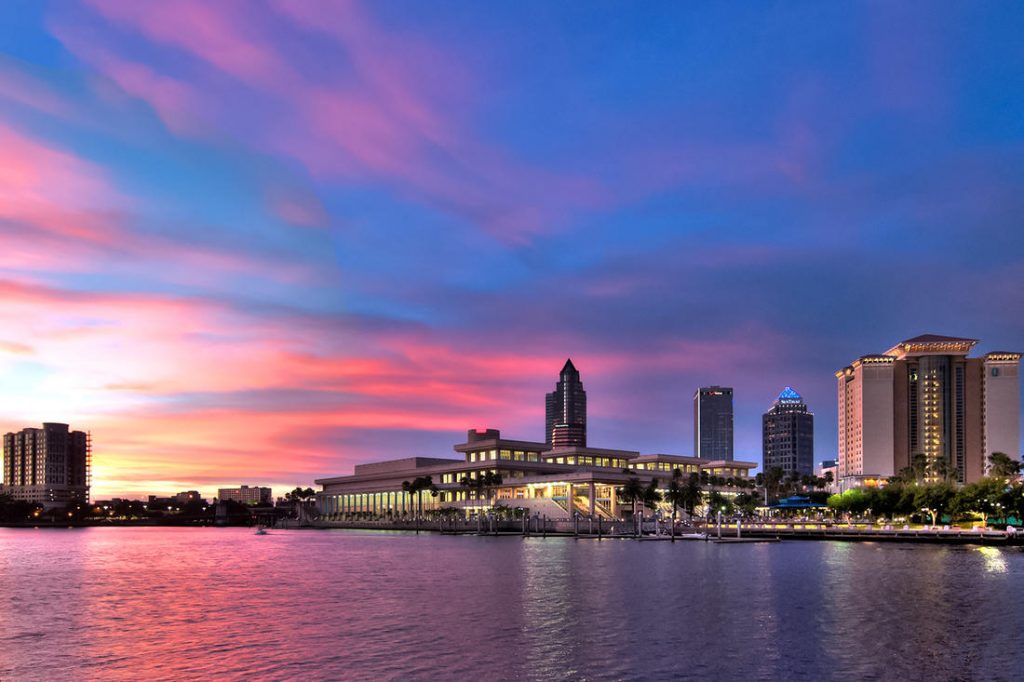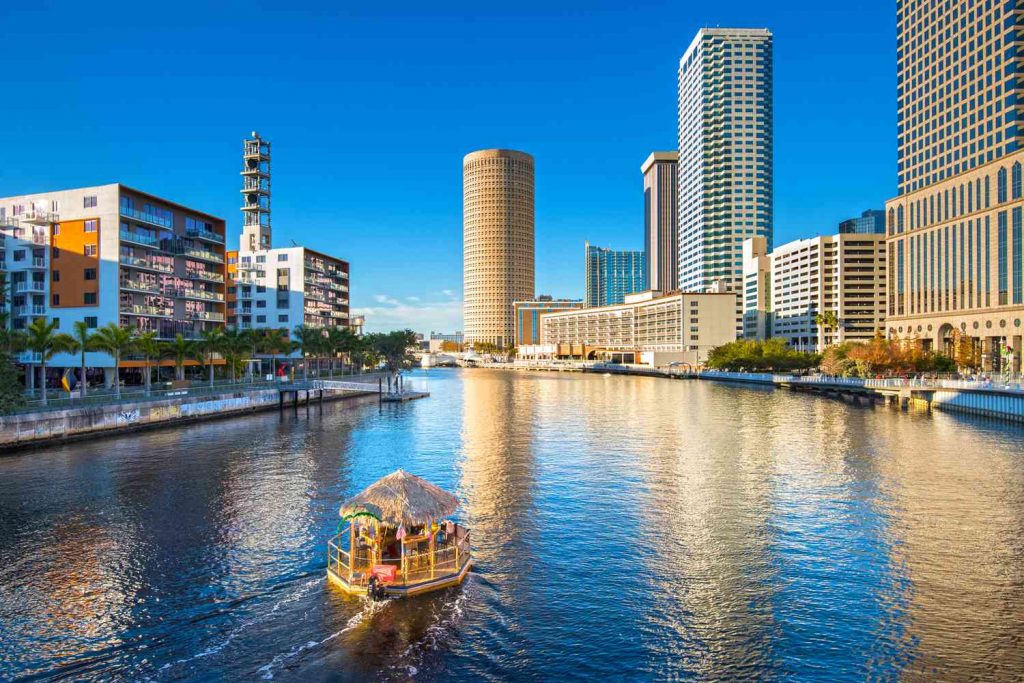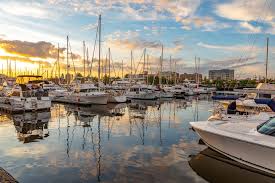Tampa Bay Map: Navigating the Heart of Florida's Gulf Coast
Exploring the Tampa Bay area through a detailed map offers a fascinating glimpse into one of Florida's most vibrant regions. The bay itself is a large natural harbor connected to the Gulf of Mexico on the west-central coast of Florida.

This metropolitan area is quite significant, with Tampa being a major city known for its rich history and numerous attractions.
Understanding the layout of Tampa Bay is essential for anyone wishing to explore its unique geography, bustling urban areas, and diverse points of interest.

The map reveals an estuary that plays a crucial role in the local ecosystem, featuring places like Hillsborough Bay and the Pinellas Peninsula. Beyond the natural beauty, Tampa Bay is home to a dynamic mix of cultures and communities, contributing to the area's vibrant lifestyle.
The Tampa Bay map also serves as a guide to its infrastructure and transportation routes, crucial for both residents and visitors.
With a growing population of over 4 million, the Tampa Bay Area encompasses various urban areas and suburbs, each offering different attractions and conveniences.
From beaches to historic districts, there's a wealth of experiences mapped out across this coastal region.

Key Takeaways
- Tampa Bay is a major coastal region in Florida.
- The map of Tampa Bay highlights unique geography and urban areas.
- Infrastructure and transportation are essential to navigating Tampa Bay.
Geography and Cartography
Tampa Bay, located on the west coast of Florida, is a prominent estuary known for its natural features, including rivers and peninsulas. Various maps and resources are available to explore this area, providing both geographic and navigational insights.
Tampa Bay Natural Features
Tampa Bay is characterized by its shallow estuary, covering about 400 square miles. This brackish water body links to the Gulf of Mexico and includes several minor rivers and streams like the Hillsborough River.
The Hillsborough River originates from the Green Swamp area and flows through Tampa, offering a unique landscape to the city. Meanwhile, the Interbay Peninsula and Pinellas Peninsula create distinct sections of the bay, such as Old Tampa Bay to the west. Key natural landmarks include Clearwater Beach, Egmont Key, and Weedon Island, each offering diverse ecological environments.

Latitude and Longitude
Tampa Bay is situated at an approximate latitude of 28° North and longitude of 82.3° West. These coordinates place the bay in the heart of Florida's Gulf Coast, making it a crucial spot for both local and international navigation.
The bay's location provides a strategic point for maritime activities, and its geographic positioning affects the climate, making it warm and humid. These coordinates also help in mapping and creating accurate representations for various purposes, including environmental studies and urban planning.

Maps and Resources
Multiple mapping resources are available for exploring Tampa Bay. Interactive maps offered by Google and OpenStreetMap provide detailed navigation options and geographic insights. It's easy to visualize Tampa's layout and natural features using these digital tools.
For printed or downloadable maps, several online sources offer topographic and elevation data, enhancing the ability to study the bay's terrain. Government agencies and educational institutions also provide maps focusing on historical and current geographic data. Together, these resources offer a comprehensive understanding of Tampa Bay's geography and cartography.
Demographics and Urban Areas
Tampa Bay consists of diverse populations and various urban areas. These demographics and cities highlight its growth and community makeup.
City Populations
The Tampa Bay Area, covering major cities in Hillsborough County, has seen significant growth. Tampa's population is about 398,000. St. Petersburg, another key city, has around 260,000 residents.
Clearwater adds approximately 116,000 people. Altogether, the metropolitan area boasts 3.2 million people. The population data reflects varied age, race, and income levels. These figures hint at a robust community and economic set-up.

Major Cities and Neighborhoods
Tampa is the largest city, featuring vibrant neighborhoods like Downtown Tampa and Ybor City. Known for historic streets and cultural hubs, these places attract both locals and visitors.
Tampa Heights and Riverside Heights showcase more residential but lively environments. Meanwhile, St. Petersburg and Clearwater contribute to Tampa Bay's urban landscape, each with unique attractions and communities.
Other notable places include Brandon, East Tampa, Lowry Park, Port Tampa, and Palmetto Beach. Each area is vital for the region’s character, residential options, and economic activities. These neighborhoods and cities reflect the diverse and dynamic fabric of Tampa Bay.
Points of Interest and Landmarks
Tampa Bay offers a variety of attractions that cater to different interests. From rich cultural hubs to serene recreational areas and historic sites, there is something for everyone in this vibrant city.
Cultural Attractions
Tampa's cultural scene is thriving with numerous art venues and museums. The Tampa Museum of Art is a must-visit, featuring a mix of contemporary and classical pieces. Visitors can explore various exhibitions and collections that highlight significant aspects of art history.
For theater enthusiasts, the Tampa Theatre is an iconic landmark. This historic movie palace, built in 1926, showcases classic films, live performances, and special events. Its stunning architecture and ambiance provide a unique cultural experience.
Families will enjoy the interactive exhibits at the Glazer Children's Museum, which offers educational fun for children of all ages. Additionally, the Florida Museum of Photographic Arts presents a diverse array of photographic works that reflect both local and global perspectives.

Recreational Areas
Tampa boasts a range of recreational areas perfect for outdoor activities. Busch Gardens Tampa Bay is a premier attraction offering thrilling rides, live shows, and exotic animals in immersive settings. This 335-acre African-themed park is ideal for an adventure-filled day.
Nature lovers should visit The Florida Aquarium, where they can explore marine life exhibits and even engage in interactive programs like diving with sharks and swimming with fish. Another great spot is ZooTampa at Lowry Park, home to a wide variety of animals and offering interactive experiences.
For a more relaxed outing, the Tampa Riverwalk provides scenic views along a pedestrian trail that connects several downtown attractions. Ballast Point Park offers picturesque water views and leisure activities like fishing and picnicking.

Historical Sites
Tampa is rich in history with landmarks that tell the story of the city’s past. Ybor City, a historic neighborhood founded by Cuban cigar manufacturers, is renowned for its vibrant culture and history. Visitors can explore its diverse shops, restaurants, and historic buildings.
The Tampa Bay History Center offers a deep dive into the region's past, from indigenous cultures to modern developments. The center includes interactive displays and exhibits that educate visitors about Tampa’s evolution over more than 12,000 years.
Another noteworthy site is the Henry B. Plant Museum, located in the former Tampa Bay Hotel. This museum provides insight into the Gilded Age's luxurious lifestyle and Henry Plant's pivotal role in developing Tampa as a key destination.
The Manatee Viewing Center at Apollo Beach is also historically significant, where visitors can learn about the area's natural history and see manatees in their natural habitat.
Infrastructure and Transportation
Tampa Bay's infrastructure plays a crucial role in the region's connectivity and economic growth. Key aspects include major transportation hubs and the network of bridges and highways that facilitate movement.
Major Transportation Hubs
Tampa International Airport (TIA) is a primary gateway for travelers. Known for its user-friendly design and numerous amenities, it supports both domestic and international flights. The airport ensures efficient passenger flow and safety.
Another significant hub is Port Manatee. This deep-water seaport handles a variety of cargo, including containers, bulk, and breakbulk shipments. It is an essential part of Tampa's economy, providing jobs and supporting trade routes.
MacDill Air Force Base, located near downtown Tampa, is vital for defense operations. Beyond military activities, it offers some community support services, contributing to the local economy and infrastructure resilience.
Bridges and Highways
Bridges and highways are key components of Tampa's transportation network. The Gandy Bridge connects South Tampa with the city of St. Petersburg, aiding commuters and reducing travel time. The bridge is essential for daily traffic and emergency routes.
Interstate 275 (I-275) is a major highway that runs through Tampa, linking it to other parts of Florida. This highway is crucial for local and long-distance travel, ensuring smooth connectivity and efficient transportation of goods.
The city's efforts to improve infrastructure, such as the $2 billion Tampa MOVES plan, aim to alleviate traffic congestion and enhance pedestrian safety. These plans underscore the importance of infrastructure in maintaining Tampa Bay's growth and accessibility.
Environmental Conservation
Efforts to preserve Tampa Bay's natural environment focus on maintaining its wildlife and the delicate balance within the estuary. These actions involve cooperative projects and rigorous monitoring to ensure effective outcomes.
Wildlife Preservation
In Tampa Bay, wildlife preservation is crucial as the region is home to diverse species dependent on healthy ecosystems. The Tampa Bay Estuary Program plays a significant role, working to protect habitats through projects and partnerships.
The program supports the restoration of wetlands and seagrasses, benefiting fish populations and other aquatic life. For example, restoring the Little Manatee River helps improve water quality and provide vital habitats.
Projects often involve scientific research and community engagement to monitor progress. These coordinated efforts aim to sustain biodiversity and improve the resilience of the local environment.
Frequently Asked Questions
Tampa Bay is a vibrant area that includes several key cities, diverse attractions, and numerous resources for visitors. Below are answers to common questions related to the Tampa Bay region.
What is considered the Tampa Bay area?
The Tampa Bay area includes the cities of Tampa, St. Petersburg, and Clearwater. It also encompasses several surrounding communities in Hillsborough, Pinellas, and Pasco counties.
Are Tampa and Tampa Bay two different places?
Yes, they are different. Tampa is a city, while Tampa Bay refers to the larger region that includes multiple cities and towns around the bay itself.
What major cities are located within the Tampa Bay area?
The major cities within the Tampa Bay area are Tampa, St. Petersburg, and Clearwater. These cities serve as central hubs for business, culture, and tourism.
What are some must-see attractions in the Tampa Bay region?
Must-see attractions include Busch Gardens Tampa Bay, the Florida Aquarium, and Adventure Island. Additionally, the Salvador Dalí Museum and Clearwater Beach are popular destinations.
How can I find a detailed street map of Tampa, Florida?
Detailed street maps of Tampa can be found online on city planning websites and tourism sites. Visitors can also obtain maps at local visitor centers and hotels.
Where can I obtain a printable map of the Tampa Bay area?
Printable maps of the Tampa Bay area are available on various tourism websites. Local visitor centers and travel information kiosks often provide free printable maps as well.
Charlie is Editor-in-Chief of Sea Magazine







